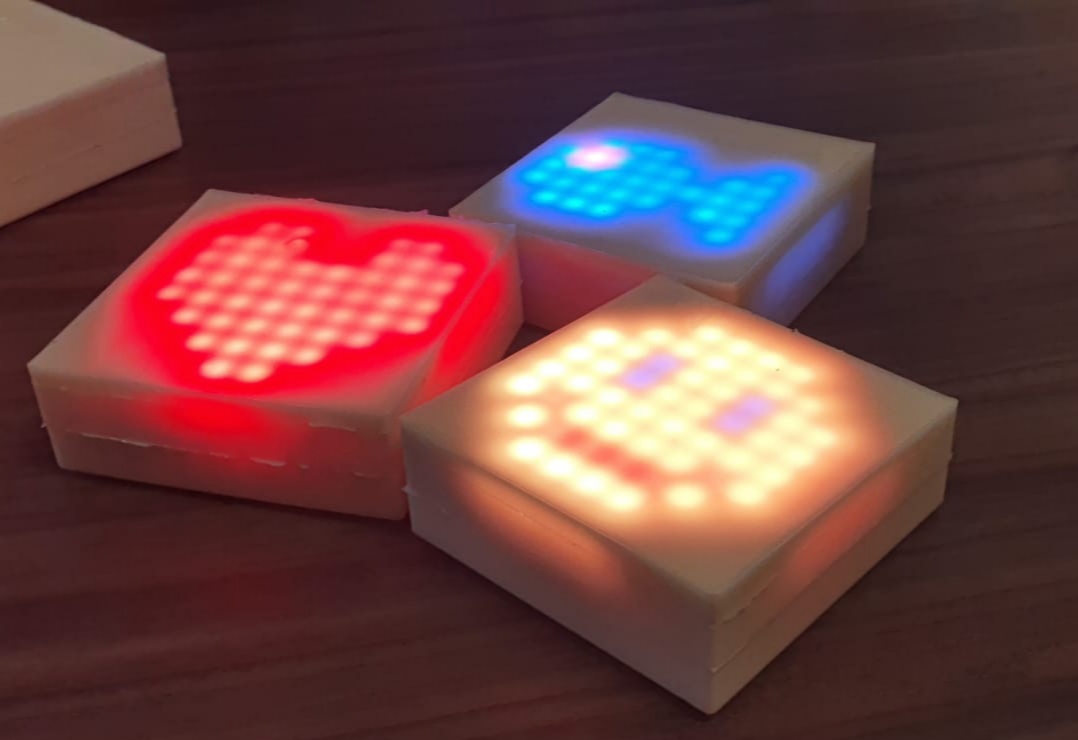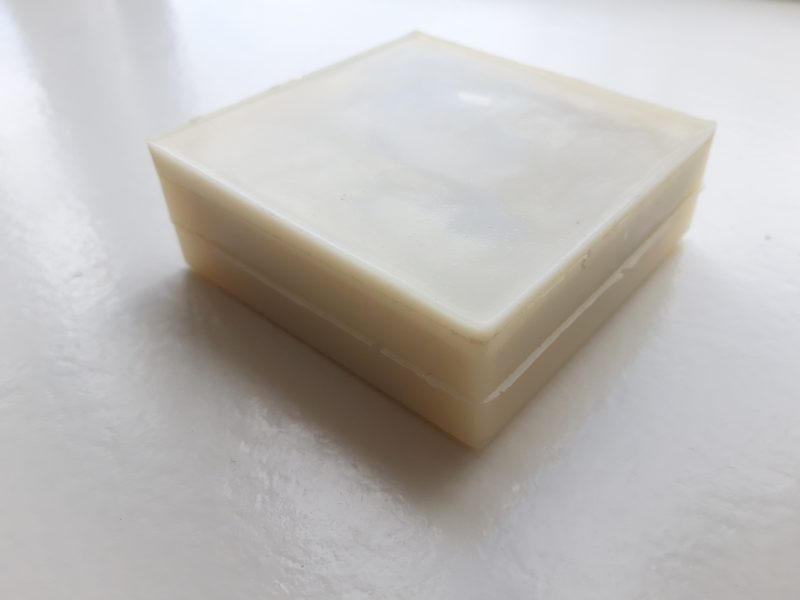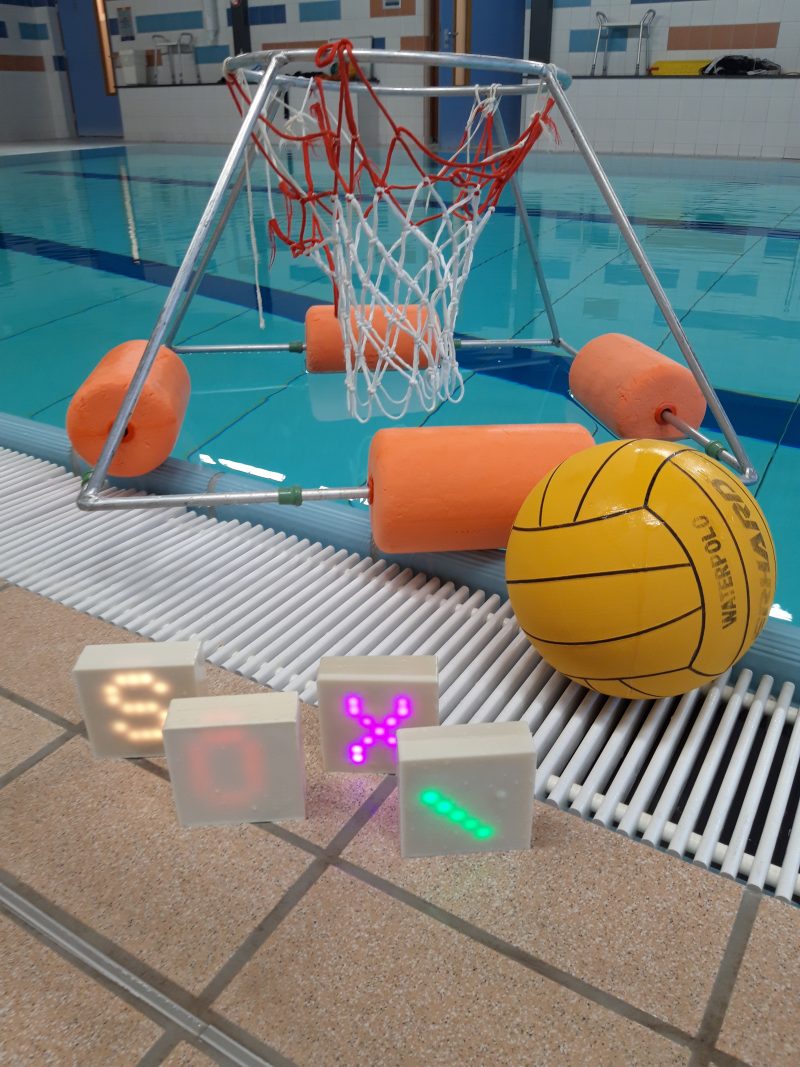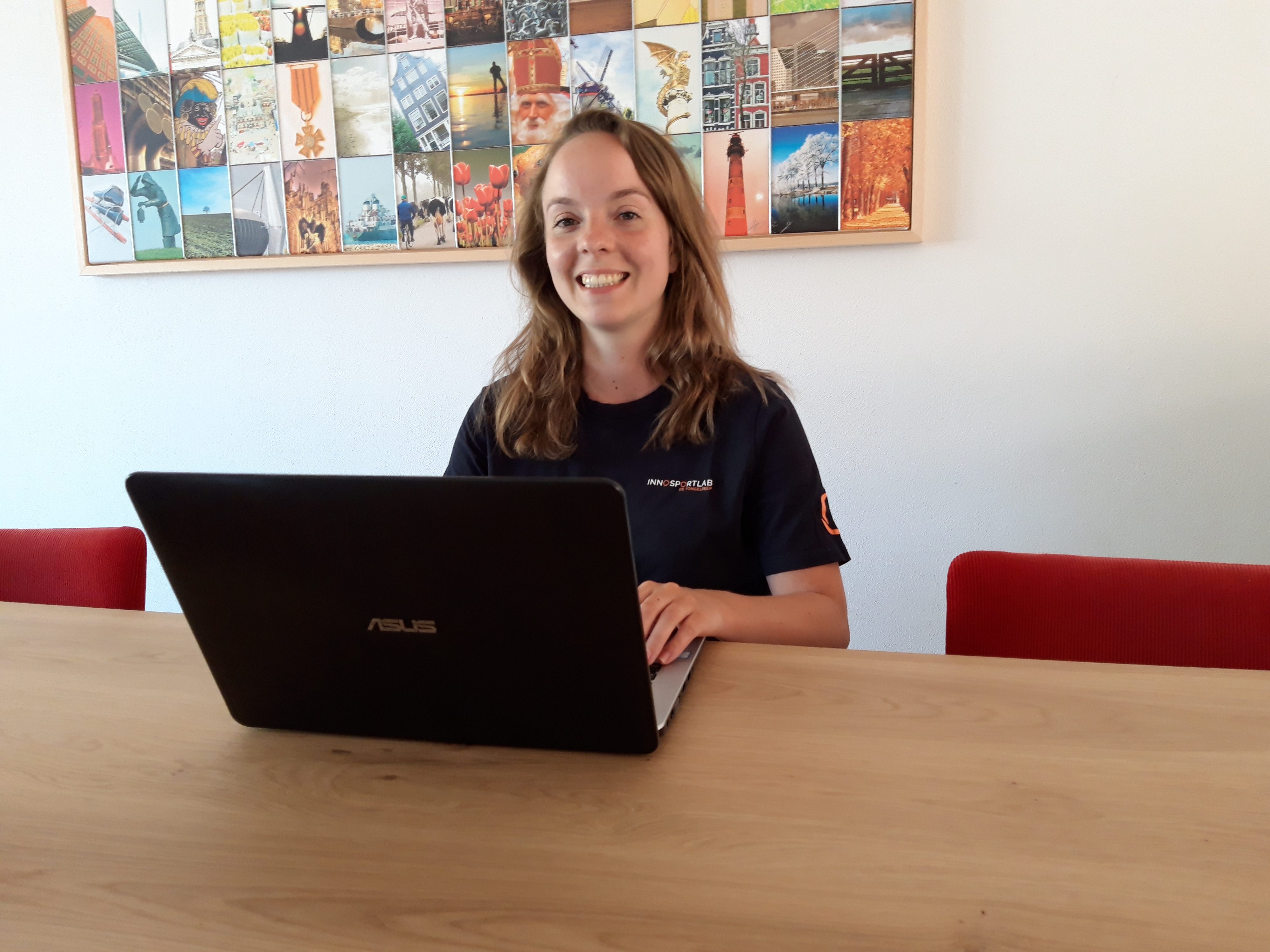Puzzle with luminous tiles in the pool

Een puzzel maken met lichtgevende tegels in het zwembad. Of een tegel die van kleur verandert als je hem aanraakt, of dat een hartje tien seconden later een smiley wordt. Toekomstmuziek? Want in het zwembad is nog maar weinig interactie mogelijk. Niet met de matjes of de ringen die kinderen nu gebruiken bij hun een poging te wennen aan het water. Daar wil het InnoSportLab de Tongelreep verandering in brengen.
Waterproof plastic
Anna Dingenouts is a fourth-year student Sport Science at Fontys Hogeschool, who is currently working on a graduate research project at InnosportLab de Tongelreep. She investigates how swimming lessons can be made more fun and innovative by means of ‘led’ tiles. These are 8 by 8 centimeter square tiles made of waterproof plastic (polyurethane to be precise), each housing 64 light emitting diodes or leds, With the led lights different figures can be made, such as a heart, smiley or bunny.

The tiles were already developed as an innovative tool, but without a plan how they might be used in the swimming lesson. This plan is being made by Anna.
After an explanation of the inventor of the tiles, Wim van den Dungen, founder of Multimediabox, Anna started her research. First from behind her desk, with a literature study, and then in practice. She administered a questionnaire with swimming instructors and organized a try-out with the tiles during the warming-up of water basketball clinic for young people with a disability. Just to see how they would respond to them, according to Anna.
“They are not really the target audience”, even though Anna’s project is part of a larger project called “limitless swimming”, which aims to let children with a cognitive disability swim without restriction. Her try-out thus fit in well with the broader project. The tiles are specifically intended to make swimming more enjoyable for children who are starting out with swimming lessons. “Such that they keep on swimming when the swimming lessons are over.”

Anna also embroidered on an earlier study by the InnoSportLab de Tongelreep which shows that fun is the most important thing to make swimming lessons more fun. Often children go to swimming lessons because they "have to", Anna says.
Choosing a sport
"We live in a water country and that includes swimming. It is mainly the parents who "have to swim", Roland Verstappen, swimming and movement education team leader de Tongelreep, says. "Most of the children enjoy the swimming lessons. Once they have obtained their swimming diploma, they are allowed to 'choose a sport'". Anna often asked Roland for feedback in her search for a clear plan behind the tiles.
The same swimming lesson for years
"I am always open to innovations in swimming lessons", Roland says, "We have been teaching in the same way for years, according to De Tongelreep's lesson plan. To make the lessons varied, we vary with the material". In any case, the most important factor in swimming lessons is the swimming teacher", Roland emphasises. "His creativity, knowledge of swimming education and how to deal with the pupils determines whether they are looking forward to the next lesson. The instructor must speak the children's language and see how a child feels in the water".
"Sometimes the aim is to introduce the child to a swimming stroke, other times to gain experience in floating. Here the role of the swimming teacher is crucial. He keeps that goal in mind. He can use such a tile during swimming lessons".
Puzzle, treasure hunt and word seeker
Anna came up with three different games for the tiles. Because the corona crisis prevented her from testing them on the children themselves, she developed a checklist. She presented it to swimming instructors, including Roland and seven instructors from the swimming club PSV. The puzzle, treasure hunt and word search, which can also serve as a calculation game, were scored on feasibility, safety and practicability.
Playfully under water
The puzzle seems the most promising. Roland: "Especially with children of four years old. They like to puzzle. So much how fun is it to do it in the water? Children are only occupied with the puzzle and not with it: 'Oh, I'm walking through the water. Oh, I'm going underwater'. That's the beauty of it: learning by moving through the water in a playful way. Because those are the principles: experiencing the resistance of the water forwards, backwards and sideways. The next step is to go underwater".
According to Roland, the tiles are more likely to motivate children and challenge them to go underwater. "The tiles may be able to support the goal of making them waterproof".
Anna testte het eerste prototype. Naast een handleiding hoe de tegels in de zwemles te gebruiken, heeft Anna verschillende aanbevelingen voor een tweede prototype. Zoals dat de tegel zo geprogrammeerd moet worden dat er verschillende spellen mee te spelen zijn, dat de aan- en uitknop makkelijker te vinden is én dat er meer tegels zijn. Nu zijn er maar vier tegels, dat is voor een echte zwemles te weinig, zegt Roland.
Second prototype
With these recommendations embedded scientist of InnoSportLab de Tongelreep, Alja Huibers continues. Alja guided Anna in her research, which is also part of Alja's larger project 'unlimited swimming'. The InnoSportLab de Tongelreep is working on ways to make swimming lessons more innovative. In addition to the LED tiles, there is a LED hare; an underwater light strip that you can set at a certain speed. This allows swimmers to train at an imposed speed. There will also be animation videos to support the swimming lesson and a video feedback system. The larger project will end at the end of September.
The corona crisis has not delayed Anna, she hopes to graduate before the summer. Alja: "What I think is very clever is that Anna has come up with a solution in a very short time. Anna can now graduate and we have nice and practical recommendations for the next prototype".
At that time, 22-year-old Anna is not yet going to work. "I still have plenty of time for that. Maybe I'm going to do a master's or at least an intermediate year. But I'm going to continue my studies anyway."

With thanks to Roland Verstappen of the municipality of Eindhoven.
Unlimited swimming' is made possible by Agis Innovation Fund and with a solidarity contribution from the common religious in the Netherlands through KNR projects in the Netherlands (PIN). The tiles are also part of the project Vitality Living Lab, in which 16 parties are working towards a more vital society.

